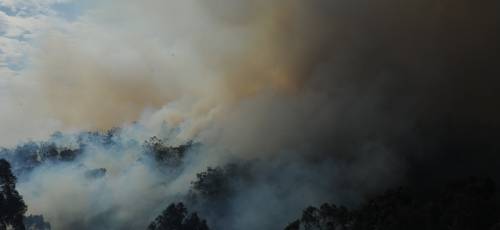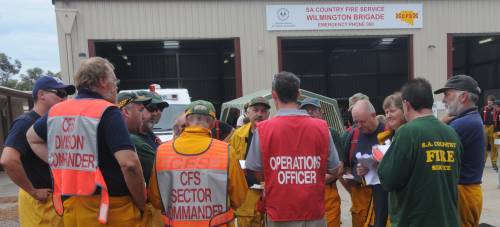
This work is licensed under a Creative Commons Attribution-ShareAlike 4.0 International License

Incident Management
Using the Australasian Inter-service Incident Management System (AIIMS)
All CFS Incidents are managed using the Australasian Inter-service Incident Management System, or shortened to AIIMS. The system allows from small through to large scale incidents to be managed using the same principals, but utilising expanded parts of the system.
At a small incident, the Incident Controller is identified and performs all of the Incident Management responsibilities. As the Incident grows in size or complexity, more of the system is established. For example, someone may be delegated the role of Operations, which often starts as a Sector Commander, or someone may be delegated a Logistics role, such as arranging catering or supplies.

The five key functional areas of AIIMS
| Incident Control | |||
| Planning Section | Public Information Section | Operations Section | LogisticsSection |
This section will explain how the CFS use AIIMS to control and manage incidents. There are a number of key sections under the five main areas, and are listed in the menu on the left.
Incident Control: Incident Control is the management of all activities necessary for the resolution of an incident
Planning Section: Planning is the collection, analysis and dissemination of information and the development of plans for the resolution of an incident
Public Information Section: The Public Information Section is focused on gathering, assembling and disseminating accurate, relevant, timely information to stakeholders outside the Incident Management Team.
Operations Section: Operations is the tasking and application of resources to resolve an incident.
Logistics Section: Logistics is the obtaining and maintaining of human and physical resources required to support an incident

The CFS has established three catagories of Incidents:
Level 1 - Incidents that can be resolved using local or initial response resources only.
Level 2 - Incidents that are more complex either in size, resources or risk. They are characterised by the need for:
- Deployment of resources beyond initial response, or
- Sectorisation of the incident, or
- The establishment of functional sections, or
- A combination of the above
Level 3 - Large Incidents characterised by the need for large quantities of resources. This generally requires establishing Divisions to provide effective management of the situation. These incidents will generally involve delegation of all functions.
The information contained within this section were in part from an article writen by Leanne Adams, SACFS Incident Management Project Officer has been printed in the SACFS Volunteer Magazine, July 2008 covering all the aspects of AIIMS used at the Kangaroo Island fires, and from training material produced by the SACFS. This volunteer magazine issue may be found here: June 2008 Volunteer Magazine
Information sourced from the CFS. Photos taken by the CFS Promotions Unit.







